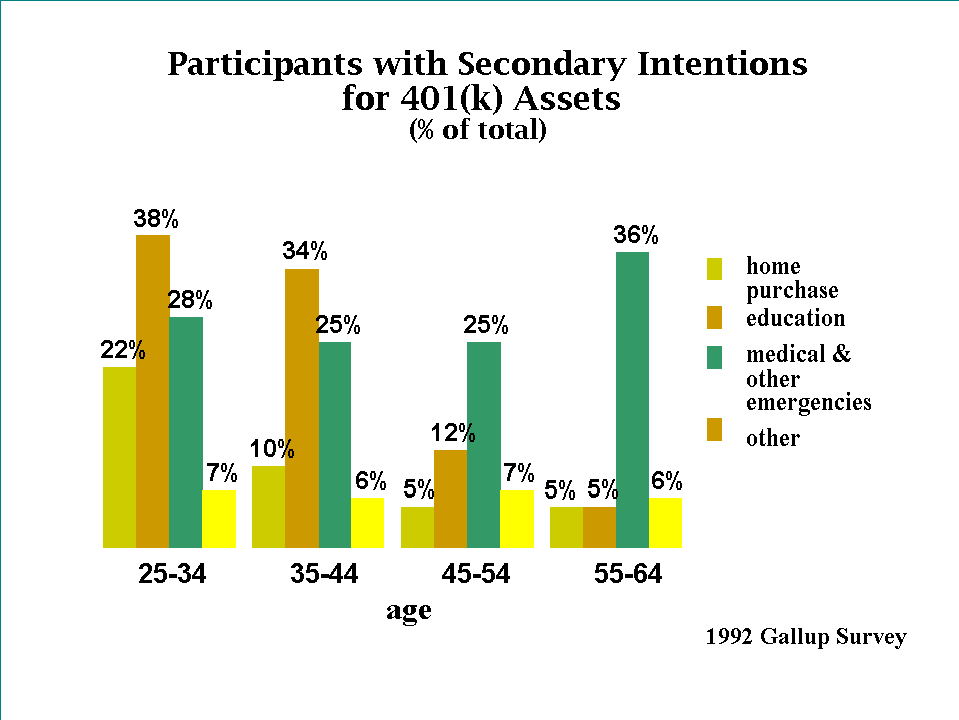LANDMARK STRATEGIES
PO Box 804
Whately, MA 01093
413-665-4638
|
|
LANDMARK STRATEGIES |
|
Stable Value: the Ideal Fixed Income Diversification Vehicle under ERISA 404(c)
by Judy Markland President, Landmark Strategies |
Are you aware that one of ERISA404(c)'s diversification requirements is that a participant be able to diversify "so as to minimize the risk of loss"? And that a 404(c) plan must offer a participant options that are "meaningfully different" on a risk/return basis? Stable value's principal safety and significant diversification benefits relative to other fixed income options make it the perfect conservative investment option for a 404(c) plan.
The Department of Labor requires that a participant-directed plan provide a participant both a broad range of funds and meaningful control over those funds to be considered a 404(c) plan whose fiduciaries are protected from liability for participants' investment selections. "Broad range" includes not just the number of funds, but the variety of their investment objectives and their diversification.
There are three basic criteria for determining whether the fund grouping is prudently broad:
A 404(c) plan participant must be able to
a. "materially affect" portfolio return potential and risk level;
b. choose between at least 3 investment alternatives; and
c. diversify his investment "to minimize the risk of large losses".Note that it's not just enough to offer the participant a lot of funds. The funds must make sense in terms of the range of choices that they offer and their combined appropriateness in a portfolio context.
What makes sense is defined in terms of participant investment needs. A 404(c) plan must offer a participant a choice of funds allowing the participant to create a portfolio "with aggregate risk and return characteristics within the range normally appropriate for the participant or beneficiary" [emphasis added]. These needs will obviously be plan-specific, since they'll vary with plan demographics: age, incomes, whether there's a DB plan or not, industry risk, etc. And there are significant needs above and beyond prudent saving for retirement.

Many participants - far too many actually - have no savings outside their 401(k) balances. Most financial planners advocate having at least 6 months income in savings to cover contingencies before it is prudent to invest. For those without other savings, the 401(k) plan has to cover contingencies. Many people plan to use their 401(k) money to help with a home purchase or to fund college education for themselves or their children. These also can be thought of as investments in a secure retirement, but they're ones with much nearer time horizons than the formal retirement age.

A Gallup survey taken a few years ago shows that participants in all age groups have secondary ideas in mind for their funds above and beyond saving for retirement. The 404(c) plan must take these needs into account and provide fund options which do more than maximize their long-term returns. The fund has to provide options which offer principal safety for contingencies and low risk options for nearer term events like home purchases, all while helping keep returns as high as possible.
In addition to satisfying the fundamental investment needs of the specific participant group, the fund offerings must provide participants with good diversification to meet the "broad range" standard.
404(c) core fund diversification requirements:
1. provide a "normally appropriate" range of expected risk and return for the participant;
2. be internally diversified;
3. have risk/return characteristics "materially different" from each other; and
4. in aggregate, minimize portfolio risk when combined.
First, each option must itself be diversified. Either there must be a diversified pool of investments or one investment backed by a diversified pool of assets. A single asset (mutual fund share, wrapped stable value portfolio, certificate of deposit) qualifies as a "look-through" investment where one looks through to an underlying diversified pool of assets.)
404(c) plan core offerings have to be significantly different from each other on a risk/return basis. And they have to offer sufficient diversification so that they can be combined so as to minimize expected portfolio risk - in other words have low or negative correlations of investment return.
Practical diversification considerations
Bonds are the most commonly discussed diversifier for stocks. Balanced funds, asset allocation funds and life cycle funds are all used to provide "sophisticated" diversification mixes for participants. Mixes of various proportions are often recommended but the goal of these mixes (e.g., minimize losses, limit expected losses to some amount, maximize expected returns subject to some established loss tolerance) is less frequently determined. The objective of the 404(c) diversification requirements is very clear, however. The Department of Labor believes that the participant should be able to move from any fund that he or she expects to incur losses into one that should not simultaneously be losing money.

Historically, it's pretty clear that bonds and stocks have been pretty well diversified. Over almost 50 years, the correlation of annual returns is pretty low at .38 - although that does say that bond and stock returns move in the same direction 40 percent of the time.

But unfortunately there is relatively little stability in this picture over time. Return experience over the last twenty years is very different than it was for the preceding three decades. And looking at the picture decade by decade reveals even more instability.

Notice that from the mid-1950's to the mid-1960's the correlation of bond and stock returns was actually negative. From 1966-75 and 76-85 it was mildly positive, with a large dispersion around the trend line. But for the last decade, the annual returns have a correlation coefficient of 0.70 with a very tight fit. To some extent the recent good fit reflects the phenomenal returns in both markets of late, but the positive correlation applies to years of poor performance as well as to the good ones.
The reasons for this behavioral shift over time are unclear. One possibility is the growing prevalence of computer-driven dividend pricing models which value stocks primarily on the basis of interest rate changes. Whatever the reason, the important point is that bonds can no longer automatically be considered a good diversifier for common stocks, especially for active DC participants for whom bonds' steady income stream is less important than for DB investors or retirees.
Stable value assets, on the other hand, do offer participants the low correlation of returns and the potential for loss minimization that 404(c) emphasizes.
Diversification benefits of Stable Value
Stable value funds satisfy the participants' need for principal safety, are internally diversified, and are materially different from other typical DC investment options on a risk/return basis. But most importantly, they reduce overall portfolio risks better than any traditional DC investment option, with negative correlations of return with both bonds and stocks over the 1988-97 period on the basis of average annual returns.
The ERISA 404(c) regulation established thoughtful guidelines for investment diversification and risk reduction for a prudently structured DC plan. With bond and stock returns becoming increasingly well correlated, it is no longer clear that those asset classes alone provide the degree of risk/return diversification and loss protection that 404(c) envisions. Money market funds offer risk diversification but at a significant income sacrifice. Stable value is the optimal conservative investment option under the 404(c) diversification criteria.

Return to Landmark Articles and Speeches 
Return Home